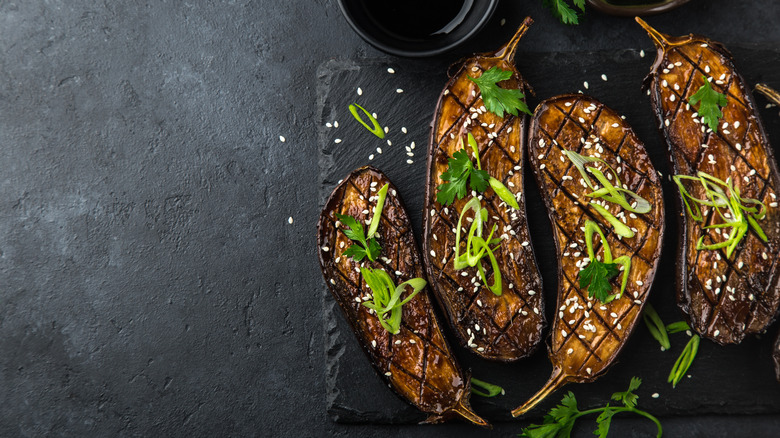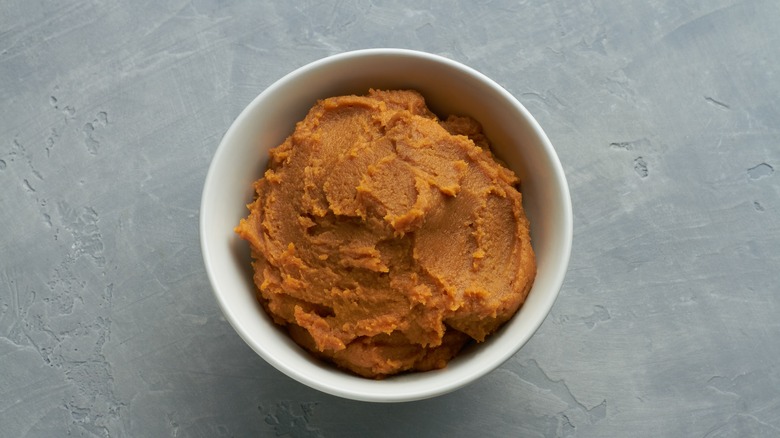The Vegan Ingredient To Amp Up Roasted Vegetables
Whether you prefer carrots, Brussels sprouts, or something else, a roasted vegetable dish is crucial in any feast — but they're all too often dull. While those green beans or potatoes may seem humble placed next to your holiday roast, there's not a world in which they have to be. Your veggies deserve just as much attention in the kitchen as in the next dish. Plus, all of us could benefit from a few more veggies on our plates. So why not amp them up?
Now, unlike many famously "upgraded" vegetable dishes — which usually include wrapping a vegetable within a strip of bacon — this veggie-enhancing ingredient is entirely vegan. But before you shut your mind off of it completely, trust that it still packs all of the same salty, umami goodness that will have everyone lining up for another serving.
Used as a plant-based protein source for hundreds of years in Japan (per Miso Tasty), miso paste is loved all around the world for its use in creating umami-rich broths without using meat. It will do the same for your veggies — without the bacon.
Miso paste
Made from fermented soybeans, miso paste is popularly included in plant-based diets due to its high protein and B12 contents (per Miso Tasty). It's often used as a plant-based broth for soups and ramen, as a substitution for anchovy-free vegan caesar dressing, and, of course, as a glaze on vegetables or tofu. Once you've cooked with it yourself, it's not hard to understand why — Nicholas Day, columnist at Food52, compares the experience to using performance-enhancing drugs. It's almost effortless, but the results are prize-winning.
With notes of earthiness, saltiness, and fermented-ness, Bon Appétit calls miso paste's flavor deeply layered. But, with thousands of miso pastes to choose from, it can be challenging to know where you should start. In this case, the lightly colored, sweet miso will be your go-to for your sauces and glazes. Nicholas Day whisks it together with maple syrup or honey, rice vinegar, soy sauce, and grape seed oil before tossing it into chopped vegetables and cooking them on high heat.
Lisa from Okonomi Kitchen uses a similar approach, claiming that the maple syrup helps to balance out the miso paste's salty and sour flavors. However, she adds a bit of tahini to the mix for a nutty finish. She also advises you to roast the vegetables before coating them in the glaze, as the sugars could easily lead to burning. Either way, expect your new and improved miso-roasted vegetables to go fast.

